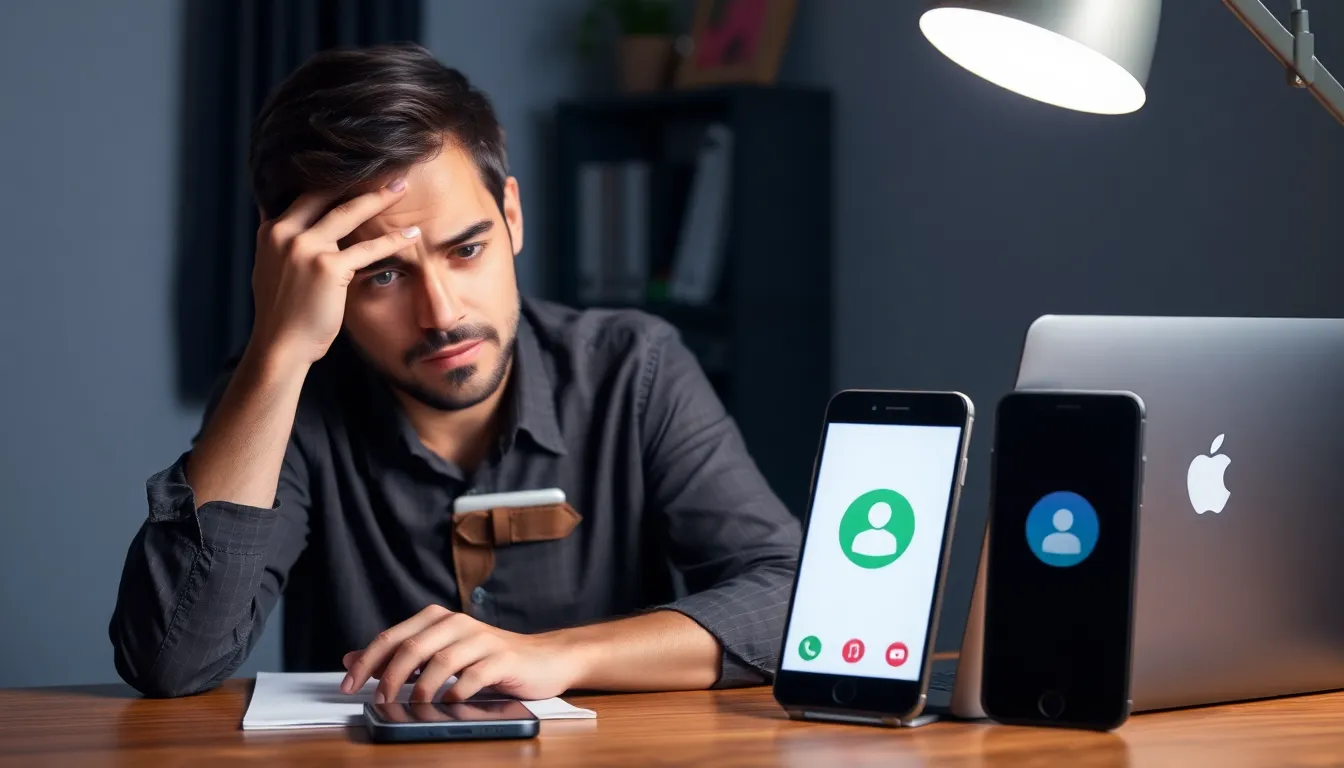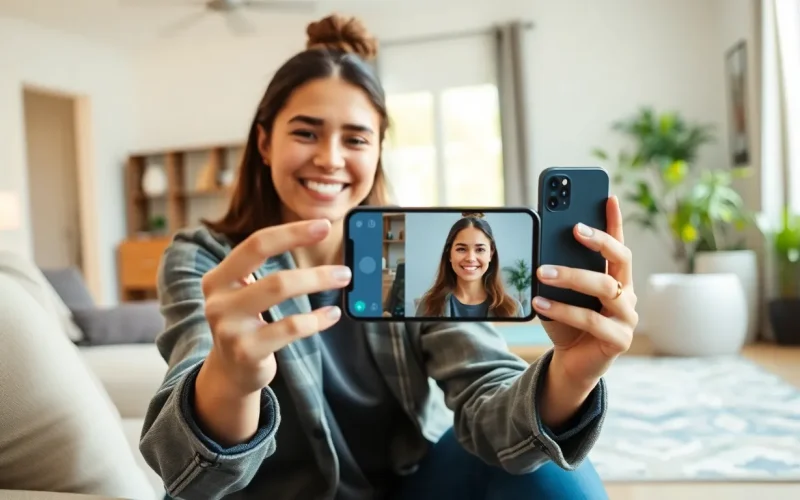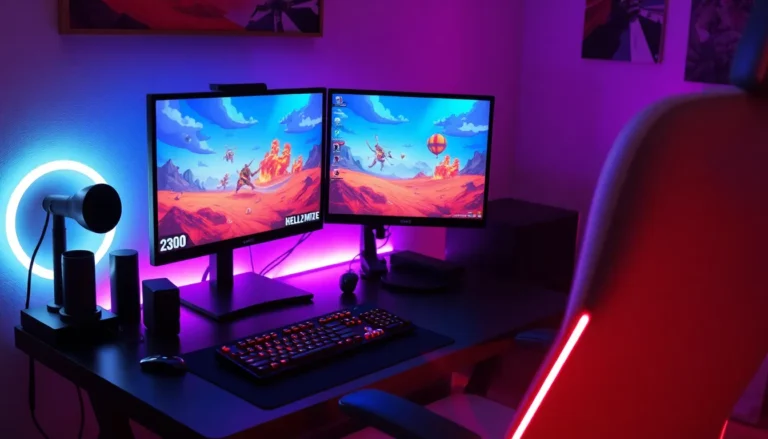Table of Contents
ToggleImagine this: you’re on your iPhone, ready to FaceTime your friend, but wait—she’s rocking an Android. Panic sets in. How can you connect with her without resorting to carrier pigeons or smoke signals? Fear not! The world of video chatting isn’t as divided as it seems.
Understanding FaceTime
FaceTime serves as Apple’s proprietary video and audio calling application, designed specifically for iOS and macOS devices. Despite its popularity, FaceTime only functions natively between Apple devices, causing challenges for users wishing to connect with Android users. This limitation often leads to frustration when trying to initiate video calls between different platforms.
Though FaceTime cannot directly connect with Android, alternatives exist to facilitate communication. Users can rely on various third-party applications like Zoom, Google Meet, or WhatsApp for cross-platform video chatting. These options provide similar functionalities, allowing users to communicate seamlessly regardless of their device’s operating system.
Integrating Android into these conversations requires both parties to download and install the chosen application. Once installed, video calls can occur easily with just a few taps. Familiarity with different platforms enhances the ability to stay connected.
For users unfamiliar with these apps, they often offer straightforward user interfaces. Each application typically requires an account, but most processes are quick and simple. Additionally, many of these platforms support group calls, expanding the social possibilities beyond one-on-one interactions.
While FaceTime cannot bridge the gap between iPhone and Android users directly, alternative solutions effectively meet communication needs. Embracing these versatile tools ensures users stay connected across different devices.
Limitations of FaceTime

FaceTime presents several limitations for users attempting to connect with Android devices. These restrictions can hinder seamless communication.
FaceTime Compatibility
FaceTime operates exclusively on iOS and macOS devices. Users with Android phones cannot use this application. The lack of compatibility results in frustration for those wanting to connect with friends or family on different platforms. Only Apple devices support FaceTime, eliminating cross-device interaction. Switching to a different app is necessary for Android users wishing to participate in video calls.
Key Restrictions
Several key restrictions impact FaceTime’s usability. Users cannot invite non-Apple users to join a FaceTime call. This limitation prevents seamless social interactions between different operating systems. Additionally, FaceTime lacks support for features such as screen sharing or real-time collaboration with Android users. These constraints limit functionality and encourage users to explore alternative video chatting options that are more versatile and accommodating.
Alternative Methods for Video Calling
Exploring alternative methods for video calling expands options for iPhone and Android users. Several applications serve this purpose effectively.
Using Third-Party Apps
Third-party apps provide excellent solutions for video calling across platforms. Applications like Zoom, WhatsApp, and Google Meet enable reliable communication. Each platform has a user-friendly interface that simplifies the process. Users download these apps directly from their device’s app store. After installation, registering an account may only take a few minutes. Initiating a video call is intuitive, typically requiring just a few taps. Groups can connect simultaneously, enhancing the social experience. Overall, these apps bridge the gap between iPhone and Android users.
Setting Up Google Duo
Google Duo serves as a straightforward choice for video calling between iPhone and Android users. Starting involves downloading the app from the App Store or Google Play Store. After installation, users sign in with their Google account or phone number. The interface displays contacts who also use Google Duo, making it easy to connect. Tapping a contact initiates a video call. Duo’s high-quality video and simple features appeal to many. Users can enjoy one-on-one or group video calls with up to 12 participants. Embracing Google Duo facilitates seamless interaction between different devices.
Step-by-Step Guide to Video Calling
This section details how to effectively initiate and receive video calls between iPhone and Android devices using third-party applications.
Initiating a Call from iPhone
Open the chosen app, such as Zoom or Google Duo, on the iPhone. Ensure the app is installed beforehand. Tap on the “New Call” or equivalent option. Enter the recipient’s phone number or email address linked to their account. Select the contact from the list that appears. Press the video call button to initiate the call. The app then connects to the Android device, allowing the user to communicate instantly.
Receiving a Call on Android
When someone initiates a video call, an incoming call notification appears on the Android device. Tap on the notification to open the app where the call is being made. Allow permissions if prompted to access the camera and microphone. Press the “Accept” button to join the call. Clear audio and video permissions improve the communication experience, making interaction hassle-free. Engage in conversation as needed, using the app’s features for enhanced connectivity.
Connecting iPhone and Android users through video calls doesn’t have to be a challenge. With various third-party applications available users can easily bridge the gap between different platforms. Apps like Zoom Google Meet and WhatsApp not only facilitate seamless communication but also enhance the overall experience with features like group calls and user-friendly interfaces.
By embracing these alternatives iPhone users can maintain meaningful connections with friends and family on Android devices. The key is to choose an app that suits both parties and follow the straightforward setup process. This way everyone can enjoy high-quality video chats regardless of their device preference.





